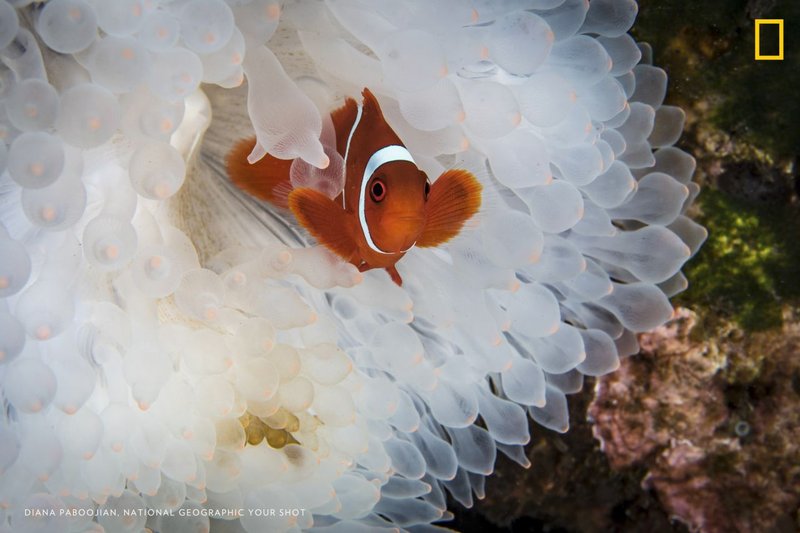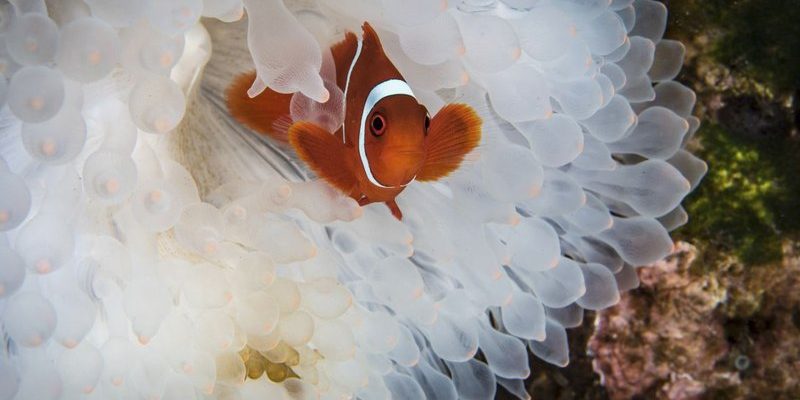
Imagine being at a party, surrounded by friends, eating your favorite snacks. Now, imagine that someone changes the music to something you don’t like and starts tossing around stale chips. Not fun, right? That’s kind of what’s happening to the Yellow Tang as climate change shakes up their homes. Let’s dive deeper into how climate change is affecting these iconic fish and what it means for their future and the ecosystems they inhabit.
Understanding the Yellow Tang’s Habitat
The Yellow Tang, or *Zebrasoma flavescens*, thrives in warm, shallow waters of the Pacific Ocean, particularly around Hawaii. Here, they graze on algae, keeping the reefs healthy. Think of coral reefs as bustling cities, where every fish has a role. The Yellow Tang is like the city’s street cleaner, keeping things tidy and making sure other plants and animals have the right conditions to thrive.
These fish prefer coral-rich areas where they can find plenty of food. Unfortunately, as climate change alters ocean temperatures, these habitats are changing rapidly. Warmer waters can lead to coral bleaching, a phenomenon where stressed corals expel the algae living in their tissues, causing them to lose their vibrant colors and, ultimately, their life. Without healthy coral reefs, the Yellow Tang faces dwindling food and shelter.
The Impact of Rising Ocean Temperatures
Here’s the thing: fish are ectothermic, which means their body temperature is determined by their environment. When ocean temperatures rise, it can stress fish like the Yellow Tang. Elevated temperatures can lead to changes in behavior, reduced growth rates, and even increased mortality rates.
The warm water also affects the oxygen levels in the ocean. Just like us, fish need oxygen to survive. When water gets warmer, it holds less oxygen, making it harder for marine life to breathe. Imagine trying to run a marathon in a stuffy room—it’s tough, right? That’s what the Yellow Tang is facing in warmer waters.
Moreover, these rising temperatures can lead to an increase in diseases. Just like humans can get sick more easily when they’re stressed, fish too become more susceptible to infections when they’re stressed out by heat. This could lead to a decline in Yellow Tang populations, further disrupting the balance of their ecosystems.
Ocean Acidification: A Hidden Threat
While everyone talks a lot about rising temperatures, ocean acidification is a less visible but equally concerning issue for the Yellow Tang. When we burn fossil fuels, carbon dioxide (CO2) is released into the atmosphere. Much of that CO2 is absorbed by the ocean, making it more acidic.
Acidic waters can harm coral reefs and the algae vital for their survival. Without healthy corals, the Yellow Tang loses its habitat and food sources. It’s a double whammy! Imagine going to your local restaurant only to find your favorite dish is off the menu. That’s how the Yellow Tang feels when its coral environment starts to break down.
Additionally, acidification can affect the fish’s ability to detect predators, making them more vulnerable. If a Yellow Tang can’t sense danger, it might not escape as quickly as it should. This impacts their survival and the overall health of the reef ecosystem.
Effects on Yellow Tang Behavior and Migration
With changing temperatures and habitats, you might be wondering how the Yellow Tang is adjusting its behavior. Fish are often known to migrate to find better living conditions, but this isn’t always easy. The Yellow Tang has a home, and abandoning it isn’t like moving to a new apartment. It’s a life-altering decision that could lead to further stress.
When ocean conditions change, these fish may be forced to move to cooler waters. This can lead to overcrowding in certain areas and create competition for food and space. Think about a high school lunchroom packed with students; it’s hard to find a seat, and the atmosphere can get tense. For Yellow Tangs, increased competition means they might not get the nourishment they need to thrive.
Moreover, disruption in their usual habitats can result in mixed populations. This can cause changes in breeding patterns, leading to further uncertainty about their future. A shift in migration patterns could also impact their interaction with other species, altering the balance of the entire reef ecosystem.
Conservation Efforts and What You Can Do
Fortunately, many organizations are working to protect the Yellow Tang and its habitat. These efforts include creating marine protected areas (MPAs) where fishing is limited, allowing ecosystems to recover. In Hawaiian waters, there’s a push to promote sustainable fishing practices and reduce pollution.
You might be wondering how you can help. Supporting sustainable seafood choices, reducing plastic waste, and advocating for climate change policies are essential steps. Even simple actions like reducing water usage can contribute to a larger impact. Remember, every little bit counts!
Additionally, educating others about marine conservation can help raise awareness. When more people understand the significance of protecting species like the Yellow Tang, action can lead to real change. Just as every voice matters in a community, every action counts in preserving our oceans.
The Future of the Yellow Tang
The situation for the Yellow Tang is precarious, but not hopeless. With combined efforts in conservation, education, and adopting sustainable practices, there’s potential for recovery. The future of the Yellow Tang hinges on our actions today and our commitment to safeguarding marine environments.
With continued research and support for policies addressing climate change, there’s hope for these vibrant fish. Understanding how climate change affects not just the Yellow Tang but the entire ocean ecosystem is crucial. It’s like caring for all the components in a machine; if one part malfunctions, the entire system can break down.
Climate change is affecting marine life on all fronts, and the Yellow Tang is just one example of how interconnected our world is. By understanding the challenges these fish face, we can take steps to ensure their survival. Just like your favorite local restaurant needs customers to stay open, Yellow Tangs need sustainable practices and a healthy environment to thrive.
Remember, change starts with small actions and leads to big impacts. As you dive deeper into the issues surrounding climate change and marine life, think about how you can be part of the solution. By working together, we can protect the beautiful Yellow Tang and the vibrant ecosystems they inhabit for generations to come.

